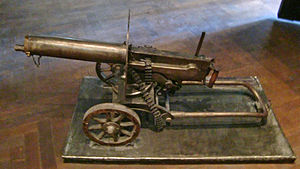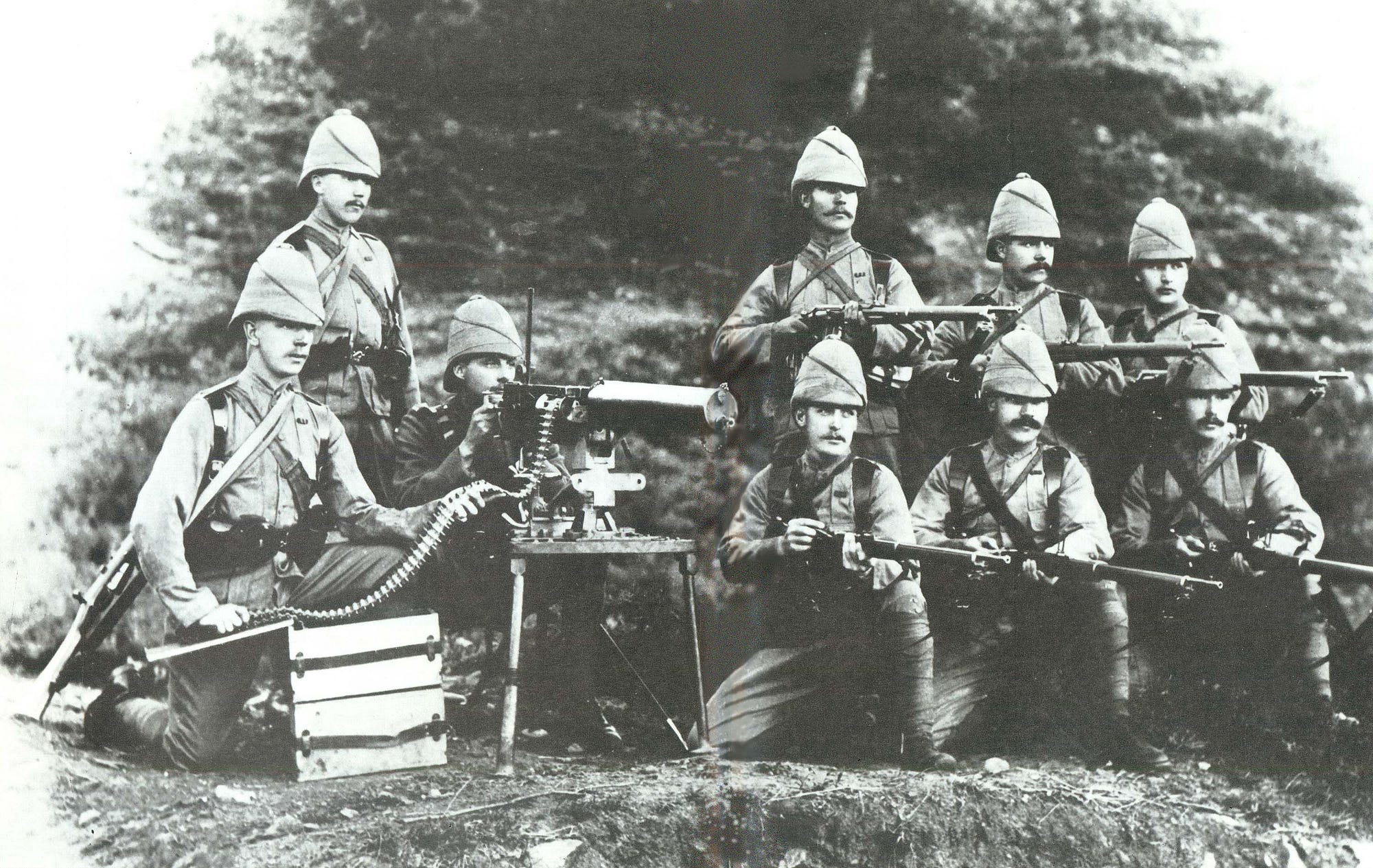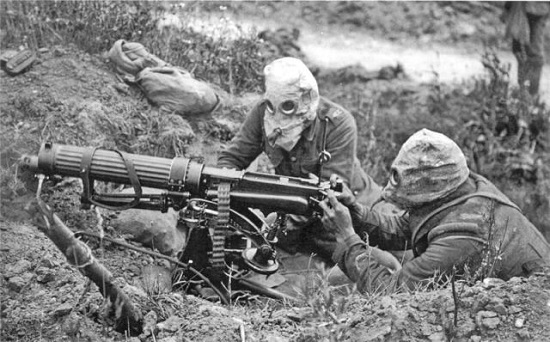How the Maxim Gun changed the face of warfare
In 1881 the American inventor, Harim maxim, visited the Paris Electrical Exhibition. While he was at the exhibition he met a man who told him: "If you wanted to make a lot of money, invent something that will enable these Europeans to cut each other's throats with greater facility."
Maxim moved to London and over the next few years worked on producing an effective machine-gun. In 1885 he demonstrated the world's first automatic portable machine-gun to the British Army. Maxim used the energy of each bullet's recoil force to eject the spent cartridge and insert the next bullet. The Maxim Machine-Gun would therefore fire until the entire belt of bullets was used up. Trials showed that the machine-gun could fire 500 rounds per minute and therefore had the firepower of about 100 rifles.
 |
| Maxim Gun |
The gun since became associated with colonial expeditions in Africa. In addition to its devastating effects, it had a significant physcological impact which often played a much greater role in defeating native attackers than its bullets. It was first used by Britain’s Colonial forces in the 1893-94 Matabele War in Rhodesia. During the Battle of the Shangani, 700 soldiers fought off 5,000 native warriors with just 4 maxim guns. The extreme lethality against grouped infantry was applied to its full extent, as the hail of maxim rounds made charging tactics obsolete. Whenever natives were lured into pitched battle on open terrain, the result was determined by whichever side had the machine gun, inevitably the conquerors. It’s impact in colonial conflicts was enshrined by the words of Hillarie Belloc in his poem ‘The Modern Traveller’ – ‘Whatever happens, we have got the Maxim gun, and they have not’. Sadly this line reflects the course of many thousands of battles, as Maxim totting Europeans swiftly conquered the continent of Africa during the 19th century.
 |
| British unit with Maxim gun in Uganda |
Use of Maxims however, did not always guarantee victory against lighter armed foes as the British discovered in the Boer war. Its effectivity is limited to open ground, but was susceptible to guerrilla tactics. The military observer, Bloch, noted the effectiveness of such weaponry and how it made the attacking principle of Clausewitz redundant, article here. With such knowledge, he accurately predicted the nature of the First world war in his 1898 work: ‘Technical, Economic and Political Aspects of the Coming War’. Sadly, the European military chiefs did not heed Bloch’s wisdom, despite its confirmation during the Russo-Japanese War, and still adhered to the outdated ideas of Clausewitz at the onset of the First World war. Such limited thinking was the cause for the disproportionate causalities in the first months of the conflict.
 |
| French machine gun crew 1917 |
The prevalence of machine guns of greater capacities than maxim’s original progeny helped to facilitate the stalemate of World War One, in which the weapons proved ideal for the defence of trenches, especially in fortified concrete pillboxes. Such technology made warfare an act that favoured the defender, and made the attacker the victim of massive casualties as they had no other way but to approach the machine guns head on through suffocating mud and cruel barbed wire.
 |
| Anzac troops advance across no man's land |
Comments
Post a Comment